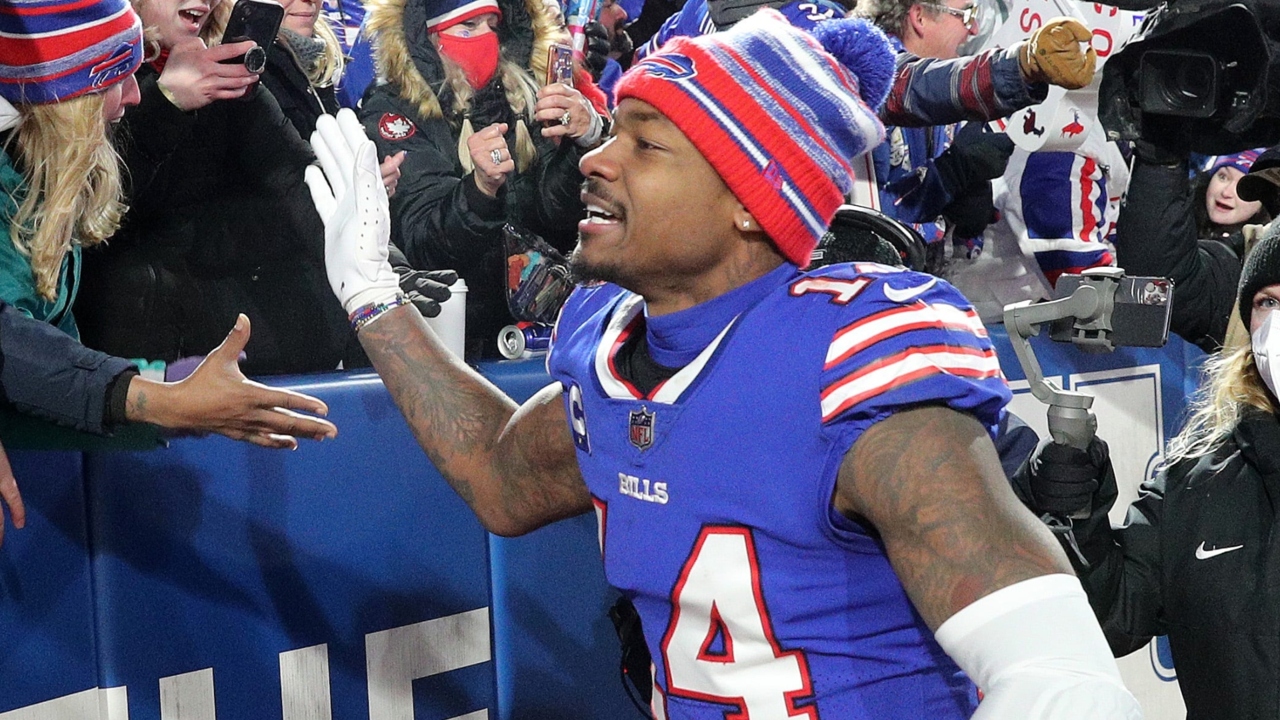The landscape of the NFL shifted dramatically with the Buffalo Bills’ recent trade, sending star wide receiver Stefon Diggs to the Houston Texans. This move, bringing a second-round draft pick in 2025 (via the Minnesota Vikings) to Buffalo, along with a sixth-rounder in 2024 and a fifth-rounder in 2025 to Houston, has stirred a buzz across the sports world. As we delve into the intricacies of this trade, it’s clear that both teams had their reasons, ranging from financial adjustments to strategic rebuilding.

The Motivations Behind the Trade
For the Buffalo Bills, this trade came amidst a challenging offseason, marked by the need to navigate salary cap constraints and make strategic shifts in player personnel. The decision to trade Stefon Diggs was influenced by several factors, including his recent production dip and the hefty financial commitment his contract demanded.
The Bills, facing a tighter salary cap, saw this move as an opportunity to recalibrate their roster around the core talents of quarterback Josh Allen. The trade frees up significant cap space for 2024 and beyond, offering Buffalo flexibility and additional draft capital to fortify their squad.
why tf is Sketch playing football with CJ Stroud, Stefon Diggs and Tank Dell 😭pic.twitter.com/sI6EGF2wsx
— ryan 🤿 (@scubaryan_) April 7, 2024
On the flip side, the Houston Texans emerged as the immediate beneficiaries of this trade. The addition of Diggs offers a monumental boost to an already promising offense led by quarterback C.J. Stroud. With Diggs’ track record of impressive catches, yards, and touchdowns, the Texans’ offense is now more formidable, making them a serious contender in the Super Bowl conversation.
Stefon Diggs: The Houston Texans’ Winning Bet
Grade: A-minus
The Texans, by acquiring Diggs, have made a clear statement of intent. This move is not just about adding a talented receiver; it’s about providing C.J. Stroud with all the tools he needs to succeed. The Texans’ offense, already teeming with talent, has gained an edge that could very well propel them into the playoffs with Super Bowl aspirations.

Adding Diggs, alongside running back Joe Mixon and a solid receiving corps, gives Houston an offensive lineup that can compete with the best in the league. The strategic bolstering of their defensive line further cements their status as a team to watch. If Stroud continues to excel and the team synergizes around their new additions, the Texans could very well find themselves in the championship conversation.
The Buffalo Bills’ Calculated Gamble
Grade: B-minus
Buffalo’s decision to part ways with Stefon Diggs reflects a broader strategic shift, focusing on financial health and long-term roster construction. While the trade does strip away a significant chunk of their receiving talent, it also alleviates salary cap pressures and opens up new avenues for team building.

General Manager Brandon Beane’s move might raise eyebrows, given the immediate impact on the team’s offensive capabilities. However, the addition of Curtis Samuel and the potential for draft picks to replenish the receiver room signal a readiness to adapt and evolve. The Bills are betting on Allen’s ability to elevate those around him and on the team’s capacity to find new playmakers in the draft.
Looking Ahead
As both teams navigate the aftermath of this significant trade, the 2024 season looms with anticipation. For the Texans, the arrival of Stefon Diggs heralds a new era of offensive firepower, with hopes pinned on a deep playoff run. Meanwhile, the Bills face the challenge of retooling their offense around Allen, with the expectation that strategic cap management and fresh talent will keep them competitive.
This trade epitomizes the ever-evolving nature of the NFL, where bold moves can either pave the way to glory or serve as lessons in the delicate art of team building. As the 2024 season approaches, all eyes will be on how these changes unfold on the field, setting the stage for what promises to be an enthralling chapter in the league’s history.

Source: The Athletic









